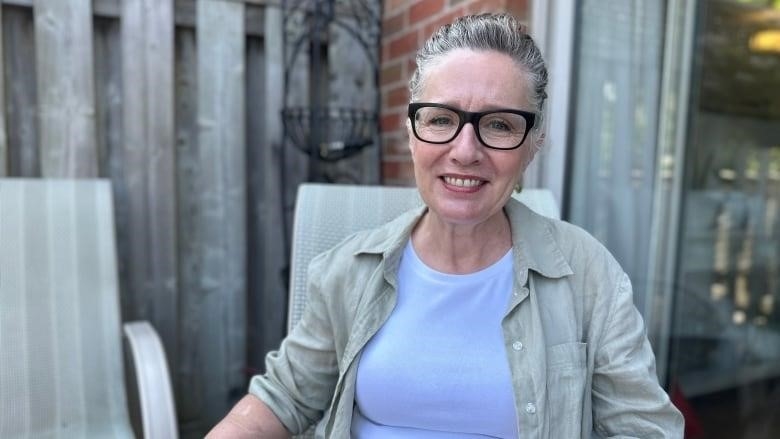
The Canadian Cancer Society says that about 9,000 Canadians will be diagnosed with melanoma in 2022
Maureen Meehan, 63, has been careful to protect her skin from the sun’s ultraviolet (UV) rays since she was in her early 20s. She also checks her body for moles often.
So, when the London, Ontario, woman found out in August 2017 that she had stage 3 melanoma, a deadly form of skin cancer that had quickly metastasized and spread to her lymph nodes, it was a big surprise.
Meehan said, “The first thing I thought of was my daughter and husband, and it made me sad to think that they might have to go on without me.” “It was really bad, and the fact that it had spread to other places was very scary.”
Meehan had a mole on her right forearm for many years, but she didn’t notice that it felt “funny and a little itchy” until she was out riding her bike one day. She told her family doctor right away. At first, he didn’t believe her, but after she followed up and got tested, it was found to be cancerous.
The Canadian Cancer Society says that in 2022, about 9,000 Canadians will be diagnosed with melanoma and 1,200 will die from it. This is up from about 8,700 in 2021, which was already an increase of 8.5% from 2020.
WATCH | A woman who beat melanoma talks about her experience:
Meehan had surgery to remove the melanoma from her arm. Two swollen lymph nodes were also taken out of her right armpit.
Now that she has been cancer-free for a year, Meehan is talking about her experience to raise awareness about how important early detection and speaking up for one’s own health are.
“Once you’ve had cancer, you’re always afraid of it,” she said. “That insistence that I have my mole checked saved my life.”
So, what do you need to watch out for?
Doctor says, “Remember the ABCDEs.
Dr. Maxwell Sauder, an onco-dermatologist, says that melanoma is a type of cancer that starts in the skin and usually looks like a mole that isn’t round.
He said that melanoma is one of the most dangerous types of skin cancer if it isn’t caught early. “It’s basically the pigment-making cell in the skin that goes bad, and it can grow big, but it can also spread to other parts of the body.”
Sauder said that most cases of melanoma are limited to the skin and can happen anywhere on the body, but the most common places are the back, calves, and places that get a lot of sun.
The doctor in Toronto says to remember the ABCDEs of melanoma. This means you should look for:
- Asymmetry: If you cut a mole in half, the two sides should look different.
- Border: If the mole’s edge isn’t smooth or even.
- Color: If the mole isn’t the same color all the way through, it could have shades of three or more colors.
- If the mole is bigger than the end of a pen or pencil eraser, this is its diameter.
- Evolution is when a mole changes in size, shape, color, or symptoms in a big way.
Sauder says to have someone else look at parts of your skin you can’t see, like your back, or use a hand-held mirror while your back is facing a full-length mirror.
How quickly melanoma spreads depends in part on how thick it is. Sauder said that most cases in Canada are pretty thin, which shows how important early detection is.
“When caught early, cutting it out is a very simple and straight-forward solution. “The overall five-year survival rate goes down when we let things get worse, so catching it early is almost always a cure,” he said.
Sauder says that to stay safe in the sun, you should avoid tanning beds, spend less time in peak sunlight, and use sunscreen often.Meehan says that you shouldn’t take melanoma lightly.
“It can happen to anyone, even someone who stays out of the sun as carefully as I did. Don’t dismiss or ignore it because you think it’s probably nothing. It could be something.”
